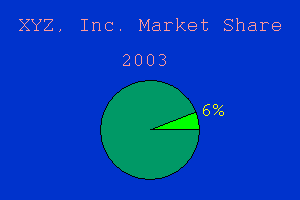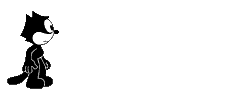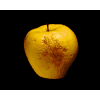
 Home
Home

 What's New
What's New

 User Manual
User Manual



 1. Introduction
1. Introduction



 2. Thumbnails
2. Thumbnails



 3. Using AspUpload
3. Using AspUpload



 4. Image Processing
4. Image Processing



 5. Drawing & Typing
5. Drawing & Typing



 6. Picture-in-Picture
6. Picture-in-Picture



 7. Metadata
7. Metadata



 8. Miscellaneous
8. Miscellaneous



 9. GIF Output
9. GIF Output

 Object Reference
Object Reference

 Live Demos
Live Demos

 Support
Support

9.1 GIF Format Overview
9.2 AspJpeg's GIF Output Support
9.3 GIF Image Resizing
9.4 Using External Images as Frames
9.5 Palette Management
9.6 Transparency
9.7 Miscellaneous Features
9.1 GIF Format Overview
A GIF image can contain up to 256 distinct colors from the 24-bit color set.
Pixel colors in a GIF image are numbers between 0 and 255 which are indices to a color palette
included with the image.
Any pixel of a GIF image can be assigned a "transparent", or see-through, color.
This enables GIF images to take arbitrary shapes when appearing on a web page.
GIF is the only widely used graphics format that supports animation. A GIF image can contain
multiple frames that are displayed one after another as a movie.
To reduce overall image size, some frames are often made smaller than the image itself,
and are displayed at an offset to only affect those portions of the image that need redrawing.
9.2 AspJpeg's GIF Output Support
A simple GIF image is created by calling the Gif.AddFrame method followed by some drawing
routines, and saved via the Save method. Other saving routines available
in the ASPJpeg object (SaveUnique, SendBinary and Binary) are supported by the Gif object as well.
AddFrame requires 4 arguments: frame width and height,
and horizontal and vertical offsets. For a single-frame image, the offset arguments are usually 0.
Most properties and methods of the Gif object operate on the current frame.
Once a new frame is added, it becomes the current one.
Another frame can be set current by setting the Gif.CurrentFrame property to the 1-based index
of the desired frame. The total number of frames is returned via Gif.FrameCount. A frame can be removed
via Gif.RemoveFrame.
The Gif object supports most of the drawing routines the Canvas object supports,
such as PrintText, DrawLine, etc. Setting various drawing properties
is somewhat streamlined compared to the Canvas object. For example, an equivalent of Jpeg.Canvas.Pen.Color is simply Gif.PenColor.
Colors in the Gif object are always numbers in the range 0 to 255
which are indices within the current palette. Palette management is described in Section 9.5 below.
The following code sample creates a simple animated 5-frame drawing with some text and a pie chart:
VB Script:
MarketShare = 6 ' initial market share
' create a 5-frame animated gif
For i = 1 to 5
Gif.PenColor = 10
Gif.PenColor = 201
Gif.PenColor = 210
' Draw pie chart
Gif.PrintText 200, 100, MarketShare & "%"
' market share almost doubles every year!
' increase delay on the last frame
' Save
// initial market share of hypothetical XYZ company
// create a 5-frame animated gif
objGif.PenColor = 10;
objGif.PenColor = 201;
objGif.PrintText( 120, 50, (2002 + i).ToString(), Missing.Value );
// Draw pie chart
objGif.PenColor = 210;
// market share almost doubles every year!
// increase delay on the last frame
// Save
Click the links below to run this code sample:
http://localhost/aspjpeg/manual_09/09_animation.asp
9.3 GIF Image Resizing
The resized image above on the right was generated using the following code:
VB Script:
' Resize to half the width, omit height
' Save
// Resize to half the width, omit height
// Save
Click the links below to run this code sample:
http://localhost/aspjpeg/manual_09/09_resize.asp
Note that the file size of a resized animated image may be larger that the original image even though the pixel
size is smaller (as in this example.) Also note that the 3rd argument to the Resize method (resizing algorithm)
can be set to 1 to create higher-quality thumbnails, but some animated images may produce
undesired "artifacts" in that case.
9.4 Using External Images as Frames
The following snippet resizes a JPEG image and converts it to a single-frame GIF:
VB Script:
' Another instance of ASPJpeg object
Gif.AddImage Image, 0, 0
' Save
Because of the loss of quality and larger file size, converting a JPEG photograph to GIF
is not beneficial, unless other GIF features are used, such as animation.
The code sample of Section 6.1
generates an image containing the thumbnails of several photographs
shown side by side. Let's rewrite
this application to generate an animated GIF showing the thumbnails in rotation instead:
VB Script:
' Read images from Images directory of the installation
Path = Server.MapPath("../images")
' Stipulate output image size
For i = 0 To 2
Jpeg.Open Path & "\" & FileNames(i)
' Resize to inscribe in 100x100 square
Gif.AddImage Jpeg, (100 - Jpeg.Width) / 2, (100 - Jpeg.Height) / 2
' Save
// Read images from Images directory of the installation
String strPath = Server.MapPath("../images");
// Stipulate output image size
for( int i = 0; i < 3; i++ )
// Resize to inscribe in 100x100 square
objGif.AddImage( (ASPJpeg)objJpeg,
objGif.DisposalMethod = 2;
// Save
Click the links below to run this code sample:
http://localhost/aspjpeg/manual_09/09_rotation.asp
Note that the overall GIF image size is dictated by the size of the first frame added,
unless we explicitly specify it via Gif.Width and Gif.Height properties.
In this application, we want the image to always be 100 x 100 regardless of the size
and orientation of the thumbnails being added. Therefore, we have to explicitly
specify the image size.
Note also that we set the DisposalMethod for each frame to 2, which means
the canvas should be restored to the background color before the next frame is drawn.
This property is 1 by default which means the previous frame needs to be left in place
and the next frame is to be drawn on top of it. In our application, the default behavior
is undesirable since all thumbnails are different sizes.
Converting true-color to 256-color images is a fairly complex process usually
referred to as quantization. The speed and quality of the conversion
is controlled by the property Gif.Quantization. Valid values for this property
are 1 to 30, 1 being highest quality and slowest speed. The default value of 20 provides
a reasonably good trade-off between quality and speed.
9.5.1 GIF Palette Overview
GIF is an indexed color format. Each pixel color is specified via an index
pointing to an RGB entry in a palette.
Each GIF image contains at least one palette. Usually, there is a single global palette
which applies to each frame of the image. In some cases, a frame has its own local palette
which takes precedence over the global palette within that frame but does not apply to any other frames.
If each frame has its own local palette, a global palette is usually not present at all.
GIF format requires that a palette contain 2, 4, 8, 16, 32, 64, 128, or 256 colors.
Each color entry in a palette contains exactly three bytes: the R, G, and B values.
9.5.2 Accessing and Modifying Palettes
The Gif object offers a number of properties and methods to access and modify
the global and local palettes of an image.
To specify an entire palette (global or local) in a single step, the SetPalette
method should be used. This method expects a Boolean flag indicating
whether the palette is global (True) or local (False), and a Variant-packed
array of numbers specifying the RGB values of the entire palette. The array must contain
a valid number of colors (2, 4, 8, etc.) multiplied by 3. If the first argument is False (indicating
a local palette) the image must already contain at least one frame, and
the palette pertaining to the current frame will be affected.
The following code snippet sets the global palette to contain 4 colors: black (0, 0, 0), white (255, 255, 255),
green (0, 255, 0) and yellow (255, 255, 0):
VB Script:
objGif.SetPalette( true, Colors );
To set or obtain the size of a palette, use the property PaletteSize which expects the same global/local
flag as the SetPalette method. The size of a palette is the number of colors, not the
total number of color components. Valid values are 2, 4, 8, ..., 256. Setting this property to 0 effectively
removes the palette entirely. Examples of using this parameterized property are as follows:
VB Script:
N = Gif.PaletteSize( False )
int N = objGif.get_PaletteSize( false );
To set or get an individual color component of a palette, use the property PaletteItem
which expects two parameters: the global/local flag and the address (0-based index) of the desired color
component within the palette. The three RGB components of the 1st color have the addresses 0, 1 and 2, the 2nd color
-- 3, 4, and 5, etc. The address parameter must be in the range [0, PaletteColor * 3 - 1].
To obtain the index for a given color, add the numbers in the leftmost column and top row corresponding
to this color.
Palette #2 contains the standard 16 HTML colors (alphabetically ordered by name), as follows:
Palette #3 contains 256 grayscale colors from RGB(0, 0, 0) to RGB(255, 255, 255) and is not shown here.
Any single color index in a frame can be assigned to be transparent, or see-through.
This is done via the property Gif.TranspColor. The following code snippet
creates a new GIF image and assigns color index 216 (the first unused index in the default palette)
to be transparent, and then fills the image with a transparent background:
VB Script:
Gif.PenColor = 216
objGif.PenColor = 216;
To remove transparency from the current frame, the property Gif.TranspColorSet needs to be set to False.
9.7.1 Other Frame Management Methods
In addition to the Gif.AddFrame and Gif.RemoveFrame methods covered above, there are also
Gif.Clear and Gif.MoveFrame methods.
The Clear method, which takes no arguments, simply
removes all frames from the image. An image with no frames cannot be saved or drawn on.
MoveFrame takes two arguments: the original index and desired index. It moves the frame
specified by the first argument to a new location specified by the 2nd argument.
If the current frame is affected by the move, the CurrentFrame property will
change to reflect the new position of the current frame.
The current frame remains the same, albeit at a new location.
9.7.2 Other Animation Management Properties
The Gif.Loops property controls how many times the animation sequence runs before stopping.
By default, this property is 0 which designates an infinite number of loops.
The Gif.Delay property affects the time delay of the current frame measured in 1/100 sec. By default,
this property is set to 100 (1 sec) for every frame being added.
9.7.3 Saving Individual Frames
The property Gif.FrameToSave, if set to a non-zero value,
instructs the Gif object to save only the frame specified by this property,
and no other frames, when a Save method is called. This enables you to view every individual
frame of an animated GIF. This feature was added mostly for debugging purposes.
9.7.4 Finding a Closest Color
The method Gif.FindClosestColor enables you to search a palette for the index
of a color closest to a given RGB trio. The method expects the global/local
flag and three RGB values. It returns an index in the specified palette
which corresponds to the color closest to the specified RGB values.
Introduced by CompuServe in 1987, Graphics Interchange Format (GIF, pronounced Jiff)
is widely used on the Web for sharp-edged images with a limited number of colors,
such as navigation buttons, logos, graphs, charts and icons.
GIF is based on LZW, a lossless compression algorithm ideally suited for simple graphics
(but not photographs.)
Starting with version 2.0, AspJpeg includes a new object, appropriated called Gif,
which provides a wide range of operations on GIF images. An instance of this object
is obtained via the Jpeg.Gif property. The Gif object is completely autonomous, i.e. it is not
affected by AspJpeg's other properties and methods.

C#:
Set Jpeg = Server.CreateObject("Persits.Jpeg")
Set Gif = Jpeg.Gif ' Obtain GIF management object
Gif.AddFrame 300, 200, 0, 0
Gif.BrushColor = 10
Gif.DrawBar 0, 0, 300, 200
Gif.FontFamily = "Courier"
Gif.PrintText 18, 15, "XYZ, Inc. Market Share"
Gif.PrintText 120, 50, 2002 + i
Gif.PenColor = 0
Gif.BrushColor = 30
Gif.DrawPie 150, 130, 50, 0, MarketShare * 360 / 100
Gif.BrushColor = 20
Gif.DrawPie 150, 130, 50, MarketShare * 360 / 100, 360
MarketShare = MarketShare * 2 - 3
if i = 5 then Gif.Delay = 300 ' 3 sec
Next
Gif.Save Server.MapPath("chart.gif")
IASPJpeg objJpeg;
IGif objGif;
objJpeg = new ASPJpeg();
objGif = objJpeg.Gif;
int nMarketShare = 6;
for( int i = 1; i <= 5; i++ )
{
objGif.AddFrame( 300, 200, 0, 0 );
objGif.BrushColor = 10;
objGif.DrawBar( 0, 0, 300, 200 );
objGif.FontFamily = "Courier";
objGif.PrintText( 18, 15, "XYZ, Inc. Market Share", Missing.Value );
objGif.PenColor = 0;
objGif.BrushColor = 30;
objGif.DrawPie( 150, 130, 50, 0, nMarketShare * 360 / 100 );
objGif.BrushColor = 20;
objGif.DrawPie( 150, 130, 50, nMarketShare * 360 / 100, 360 );
objGif.PrintText( 200, 100, nMarketShare.ToString() + "%", Missing.Value );
nMarketShare = nMarketShare * 2 - 3;
if( i == 5 )
objGif.Delay = 300; // 3 sec
}
objGif.Save( Server.MapPath("chart.gif") );
http://localhost/aspjpeg/manual_09/09_animation.aspx

The Gif object is capable of resizing animated GIF images while preserving their animation and transparency.
Resizing is performed via the Gif.Resize image which
accepts three optional arguments: new width, new height and a resizing algorithm.
You must specify either a new width, new height or both. If only one dimension is specified,
the other will be calculated automatically to preserve the original aspect ratio.
The resizing algorithm is 0 (nearest-neighbor) by default.
More information about the resizing algorithms supported by AspJpeg
is available here.
Original Image Resized Image 

C#:
...
Gif.Open Server.MapPath("..\images\WalkingCat.gif")
Gif.Resize Gif.Width / 2
Gif.Save Server.MapPath("WalkingCat_small.gif")
...
objGif.Open( Server.MapPath("..\\images\\WalkingCat.gif") );
objGif.Resize( objGif.Width / 2, Missing.Value, Missing.Value );
objGif.Save( Server.MapPath("WalkingCat_small.gif") );
http://localhost/aspjpeg/manual_09/09_resize.aspx

The Gif object is capable of converting RGB images such as JPEGs into 256-colors GIFs
with only a minor loss in image quality. An arbitrary existing image can be added to a GIF as a new frame via
the Gif.AddImage method. This method expects a populated instance of the ASPJpeg object as the first
argument, and (X, Y)-offsets of this new frame within the GIF image being created.
You must perform all desired operations over the ASPJpeg object (resizing, cropping, drawing, etc.)
before passing it to the AddImage method. The image being added must be in the RGB color space.
9.5 Palette Management
Set Jpeg = Server.CreateObject("Persits.Jpeg")
Set Gif = Jpeg.Gif
Set Image = Server.CreateObject("Persits.Jpeg")
Image.Open "c:\images\picture.jpg"
Image.PreserveAspectRatio = True
Image.Width = 200
Gif.Save "c:\images\picture.gif"

C#:
Set Jpeg = Server.CreateObject("Persits.Jpeg")
Set Gif = Jpeg.Gif ' Obtain GIF management object
Dim FileNames(3)
FileNames(0) = "apple.jpg"
FileNames(1) = "clock.jpg"
FileNames(2) = "photo.jpg"
Gif.Width = 100
Gif.Height = 100
Jpeg.PreserveAspectRatio = True
If Jpeg.OriginalWidth > 100 or Jpeg.OriginalHeight > 100 Then
If Jpeg.OriginalWidth > Jpeg.OriginalHeight Then
Jpeg.Width = 100
Else
Jpeg.Height = 100
End If
End If
Gif.DisposalMethod =2
Next
Gif.Save Server.MapPath("rotation.gif")
IASPJpeg objJpeg;
IGif objGif;
objJpeg = new ASPJpeg();
objGif = objJpeg.Gif;
String [] arrFileNames = new String[3];
arrFileNames[0] = "apple.jpg";
arrFileNames[1] = "clock.jpg";
arrFileNames[2] = "photo.jpg";
objGif.Width = 100;
objGif.Height = 100;
{
objJpeg.Open( strPath + "\\" + arrFileNames[i] );
objJpeg.PreserveAspectRatio = 1;
if(objJpeg.OriginalWidth>100 || objJpeg.OriginalHeight>100)
{
if( objJpeg.OriginalWidth > objJpeg.OriginalHeight )
objJpeg.Width = 100;
else
objJpeg.Height = 100;
}
(100 - objJpeg.Width) / 2, (100 - objJpeg.Height) / 2 );
}
objGif.Save( Server.MapPath("rotation.gif") );
http://localhost/aspjpeg/manual_09/09_rotation.aspx

9.6 Transparency
C#:
Colors = Array(0,0,0, 255,255,255, 0,255,0, 255,255,0)
Gif.SetPalette True, Colors
Object [] Colors = new Object[]
{0,0,0, 255,255,255, 0,255,0, 255,255,0};
C#:
Gif.PaletteSize( False ) = 256
objGif.set_PaletteSize( false, 256 );
0 1 2 3 4 5
0
000000
000033
000066
000099
0000CC
0000FF
6
003300
003333
003366
003399
0033CC
0033FF
12
006600
006633
006666
006699
0066CC
0066FF
18
009900
009933
009966
009999
0099CC
0099FF
24
00CC00
00CC33
00CC66
00CC99
00CCCC
00CCFF
30
00FF00
00FF33
00FF66
00FF99
00FFCC
00FFFF
36
330000
330033
330066
330099
3300CC
3300FF
42
333300
333333
333366
333399
3333CC
3333FF
48
336600
336633
336666
336699
3366CC
3366FF
54
339900
339933
339966
339999
3399CC
3399FF
60
33CC00
33CC33
33CC66
33CC99
33CCCC
33CCFF
66
33FF00
33FF33
33FF66
33FF99
33FFCC
33FFFF
72
660000
660033
660066
660099
6600CC
6600FF
78
663300
663333
663366
663399
6633CC
6633FF
84
666600
666633
666666
666699
6666CC
6666FF
90
669900
669933
669966
669999
6699CC
6699FF
96
66CC00
66CC33
66CC66
66CC99
66CCCC
66CCFF
102
66FF00
66FF33
66FF66
66FF99
66FFCC
66FFFF
108
990000
990033
990066
990099
9900CC
9900FF
114
993300
993333
993366
993399
9933CC
9933FF
120
996600
996633
996666
996699
9966CC
9966FF
126
999900
999933
999966
999999
9999CC
9999FF
132
99CC00
99CC33
99CC66
99CC99
99CCCC
99CCFF
138
99FF00
99FF33
99FF66
99FF99
99FFCC
99FFFF
144
CC0000
CC0033
CC0066
CC0099
CC00CC
CC00FF
150
CC3300
CC3333
CC3366
CC3399
CC33CC
CC33FF
156
CC6600
CC6633
CC6666
CC6699
CC66CC
CC66FF
162
CC9900
CC9933
CC9966
CC9999
CC99CC
CC99FF
168
CCCC00
CCCC33
CCCC66
CCCC99
CCCCCC
CCCCFF
174
CCFF00
CCFF33
CCFF66
CCFF99
CCFFCC
CCFFFF
180
FF0000
FF0033
FF0066
FF0099
FF00CC
FF00FF
186
FF3300
FF3333
FF3366
FF3399
FF33CC
FF33FF
192
FF6600
FF6633
FF6666
FF6699
FF66CC
FF66FF
198
FF9900
FF9933
FF9966
FF9999
FF99CC
FF99FF
204
FFCC00
FFCC33
FFCC66
FFCC99
FFCCCC
FFCCFF
210
FFFF00
FFFF33
FFFF66
FFFF99
FFFFCC
FFFFFF
Index Color Name Index Color Name 0 00FFFF aqua 8 000080 navy 1 000000 black 9 808000 olive 2 0000FF blue 10 800080 purple 3 FF00FF fuchsia 11 FF0000 red 4 008000 green 12 C0C0C0 silver 5 808080 grey 13 008080 teal 6 00FF00 lime 14 FFFFFF white 7 800000 maroon 15 FFFF00 yellow
9.7 Miscellaneous Features
C#:
Gif.AddFrame 100, 100, 0, 0
Gif.TranspColor = 216
Gif.BrushColor = 216
Gif.DrawBar 0, 0, 100, 100
...
objGif.AddFrame( 100, 100, 0, 0 );
objGif.TranspColor = 216;
objGif.BrushColor = 216;
objGif.DrawBar( 0, 0, 100, 100 );
...

Copyright © 1998 - 2007 Persits Software, Inc.
All Rights Reserved.
AspJpeg is a trademark of Persits Software, Inc.
